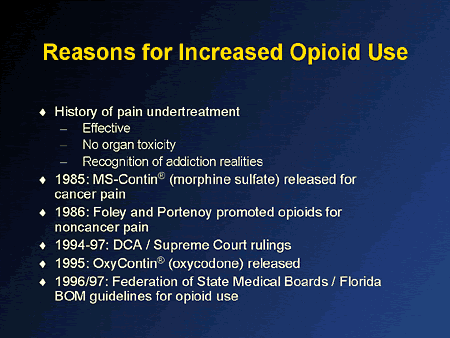High prevalence of opioid use by Social Security disability recipients, reports Medical Care
More than 40 percent of Social Security Disability Insurance (SSDI) recipients take opioid pain relievers, while the prevalence of chronic opioid use is over 20 percent and rising, reports a study in the September issue of Medical Care. The journal is published by Lippincott Williams & Wilkins, a part of Wolters Kluwer Health.
The high proportion of SSDI recipients who are chronic opioid users - in many, at high and very high daily doses - “is worrisome in light of established and growing evidence that intense opioid use to treat non-malignant [non-cancer] pain may not be effective and may confer important risk,” write Dr Nancy Elizabeth Morden and colleagues of the Dartmouth Institute for Health Policy & Clinical Practice, Lebanon, N.H.
Rising Prevalence of Opioid Use by SSDI Recipients
The researchers analyzed trends in use of prescription opioids (morphine-related drugs) among disabled Medicare beneficiaries under age 65 between 2007 and 2011. Nearly all under-65 Medicare beneficiaries are SSDI recipients; patients who go on SSDI are eligible for Medicare after two years.
Consistent with reports of an “opioid epidemic” in the United States, the results showed high and rising prevalence of opioid use by SSDI recipients. The percentage of beneficiaries taking opioids increased from 2007 through 2010. In 2011, the most recent year with available data, prevalence dipped slightly to 43.7 percent.
The percentage of these beneficiaries with chronic opioid use rose steadily, from 21.4 percent in 2007 to 23.1 percent in 2011. Chronic opioid users received numerous opioid prescriptions - at least six and generally 13 per year - typically prescribed by multiple doctors. Women were at greater risk of becoming chronic opioid users than men.
 Among chronic opioid users, the average “morphine equivalent dose” (MED) also dipped in 2011. Still, nearly 20 percent of chronic users were taking a dose of at least 100 milligrams MED, while ten percent were taking 200 milligrams. “Opioid use of this intensity has been associated with risk of overdose death in the general US population and more specifically in disabled workers,” Dr Morden and colleagues write.
Among chronic opioid users, the average “morphine equivalent dose” (MED) also dipped in 2011. Still, nearly 20 percent of chronic users were taking a dose of at least 100 milligrams MED, while ten percent were taking 200 milligrams. “Opioid use of this intensity has been associated with risk of overdose death in the general US population and more specifically in disabled workers,” Dr Morden and colleagues write.
With Wide Regional Variations in Opioid Prescribing
The researchers also found variations in opioid use across US health care regions. The regional prevalence of opioid use among SSDI recipients ranged from 33.0 to 58.6 percent; chronic use ranged from 14.0 to 36.6 percent. Drug dosage and specific opioids prescribed also varied by region.
The high prevalence and intensity of opioid use among SSDI recipients parallels the preponderance of musculoskeletal disorders, such as back pain - some type of musculoskeletal condition was present in 94 percent of chronic opioid users. The researchers also note the high rate of depression, 38 percent, among patients taking chronic opioids.
Dr Morden and colleagues voice concern about the trends in opioid use by SSDI recipients - particularly chronic use at potentially hazardous doses. “We are not suggesting that all chronic opioid use is more harmful than beneficial,” they write, “but rather that the common and increasing chronic use we observed seems inconsistent with the uncertainties surrounding such prescribing practice.”
The regional variation identified in the study “shows a lack of standardized approach and reveals regions with mean MED levels associated with overdose risk,” the researchers add. They urge further studies to assess the clinical outcomes of opioid use by under-65 disabled workers and factors associated with chronic opioid use. They also call for the development of policies and programs that balance safety with high-quality pain management for this complex group of patients.
###
Click here to read “Prescription Opioid Use Among Disabled Medicare Beneficiaries: Intensity, Trends, and Regional Variation.”
About Medical Care
Rated as one of the top ten journals in health care administration, Medical Care is devoted to all aspects of the administration and delivery of health care. This scholarly journal publishes original, peer-reviewed papers documenting the most current developments in the rapidly changing field of health care. Medical Care provides timely reports on the findings of original investigations into issues related to the research, planning, organization, financing, provision, and evaluation of health services. In addition, numerous special supplementary issues that focus on specialized topics are produced with each volume. Medical Care is the official journal of the Medical Care Section of the American Public Health Association.
About Wolters Kluwer Health
Wolters Kluwer Health is a leading global provider of information, business intelligence and point-of-care solutions for the healthcare industry. Serving more than 150 countries worldwide, clinicians rely on Wolters Kluwer Health’s market leading information-enabled tools and software solutions throughout their professional careers from training to research to practice. Major brands include Health Language®, Lexicomp®, Lippincott Williams & Wilkins, Medicom®, Medknow, Ovid®, Pharmacy OneSource®, ProVation® Medical and UpToDate®.
Wolters Kluwer Health is part of Wolters Kluwer, a market-leading global information services company. Wolters Kluwer had 2013 annual revenues of €3.6 billion ($4.7 billion), employs approximately 19,000 people worldwide, and maintains operations in over 40 countries across Europe, North America, Asia Pacific, and Latin America.maintains operations in over 40 countries across Europe, North America, Asia Pacific, and Latin America. Wolters Kluwer is headquartered in Alphen aan den Rijn, the Netherlands. Its shares are quoted on Euronext Amsterdam (WKL) and are included in the AEX and Euronext 100 indices. Wolters Kluwer has a sponsored Level 1 American Depositary Receipt program. The ADRs are traded on the over-the-counter market in the U.S. (WTKWY).
###